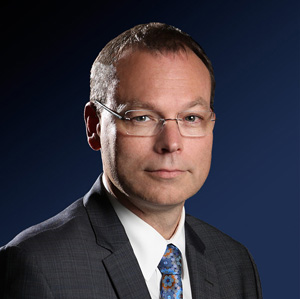As Vanderbilt University Medical Center navigates large-scale operational change through Evolve to Excel (E2E) a number of creative and substantive cost savings initiatives have already been identified.
The Medical Center’s first priority remains to achieve savings through efforts that focus on costs associated with supplies and other non-labor expenses.
Historically, the Medical Center has been able to achieve savings through priority setting and greater management of supply and equipment costs. However, more significant results are needed to help reach this year’s operational savings goal of $100 million.
“A number of creative and feasible suggestions have been submitted about cost savings opportunities that involve the management of supplies and equipment. There have been some excellent suggestions that have been forwarded to the appropriate individuals in our supply chain operation, purchasing and pharmacy. The Medical Center has had very good success making improvements in our supply and equipment costs, yet more can be achieved,” said David Posch, CEO of Vanderbilt University Hospitals and Clinics and executive director of the Vanderbilt Medical Group.
Posch said that in 2008, the supply chain process for the Medical Center was reorganized and a new structure was introduced, creating the Medical Economic Outcome Committee (MEOC). The MEOC is comprised of physicians, nurses and other supply and equipment specialists, and was created to study the efficacy of various equipment and supply decisions to look for opportunities to introduce new equipment or to standardize existing vendors based upon best-evidence and while not compromising patient care.
Through the work of the MEOC, during the years since the committee was created VUMC has realized $59 million in recurring savings. In the coming year, the MEOC will focus additional attention in areas such as the operating rooms and procedure areas. These efforts are intended to drive further vendor consolidation and create other cost savings through increased standardization of supplies.
“Personal preference has resulted in purchasing equipment and supplies from multiple vendors who have agreed to a fixed price. While this contracting methodology has allowed choice in a variety of categories and has reduced cost, continuous analysis of our internal market shows that by driving toward further consolidation of vendors already being used by a majority of our physicians creates the opportunity for even greater savings to be achieved,” Posch said.
Managing the cost of pharmaceuticals remains an area of significant opportunity for VUMC. Further revisions to the pharmacy’s formulary will bring greater utilization of drugs in dosages that will minimize waste and ensure even safer medication practices. This year, the outpatient formulary is being expanded to further reduce costs for drugs.
“The Pharmacy and Therapeutics Committee conducts rigorous evaluation of new products for inclusion in the VUMC formulary based on evidence-based medicine and best practices. Only those medications which demonstrate advantage over currently available medications or therapies are granted formulary status,” Posch said. “A new contract with a prime pharmacy distributor, through which 80 percent of the Medical Center’s drugs are purchased, was recently negotiated and is generating significant savings.”
Expenses associated with the purchase of new equipment represents another area where greater cost containment is achievable. Inventories of durable medical equipment have been updated by the Department of Biomedical Engineering. Equipment is being evaluated for its life cycle and cost relative to ongoing vendor support. Additionally, the availability of this equipment impacts the size of the inventory VUMC has to maintain. On occasion, available equipment is not easy to locate within the millions of square feet of clinical space.
One suggestion to increase efficiency and utilization is to mark the equipment with radio-frequency tags so the location of each device can be pinpointed. The radio-frequency technology will also create an opportunity to more effectively measure equipment maintenance.
The Outpatient Clinic in the Monroe Carell Jr. Children’s Hospital at Vanderbilt recently completed a “100 Day Workout,” a self-directed challenge focused on improving financial performance through revenue enhancement or expense reduction. Through this effort, which included the use of an online suggestion tool to generate ideas, the team was able to identify nearly $870,000 in operational improvements.
“Creative ideas, both large and small, resulted in steps taken in the spirit of innovation. The suggestions, which include a broad range of revenue enhancements such as cross staffing in outpatient clinics, increased charge capture for the administration of vaccines and cost reductions for printed forms, office supplies and requisitions, are to be highly commended,” said Luke Gregory, CEO of Children’s Hospital.
Recycling throughout the Medical Center also has its contributions to make. “We collect rebates from our waste vendors for cardboard, paper, plastics, aluminum and other metals,” Posch said.














